No notifications, no information: Paddling with a floating condom
Last summer, the Ontario Ministry of the Environment decided that Toronto should notify the public of wet weather events. This will alert the public when recreational water quality is in question. But nearly eight months have passed. We’re less than three months away from the next swimming season. Torontonians are still waiting. If you happen to be one of Toronto’s many dedicated rec water users like Michael and Nadia Austin, you probably have a few concerns. Waterkeeper caught up with these two surfer-SUP’ers to discuss their recent experiences on the water.
Paddling past a floating condom. (Photo by Michael Austin)
Originally from the Sunshine State, Michael moved to Toronto when he married Nadia. Coming from Florida’s sandy beaches, Michael had one condition. “I told Nadia, we have to live on the water.” Now they live by the Humber River and Humber Bay area, along the shores of Lake Ontario.
As avid surfers and stand-up paddleboarders, Michael and Nadia are in the water year-round. They praise the days in winter when the winds are howling and waves come crashing. When the water is calmer, they enjoy recreational paddles and race in the Ontario and Toronto SUP Series. Mike is currently training for the upcoming Niagara to Toronto race across Lake Ontario this September.
“To have Lake Ontario as my backyard and be able to do these things – hang out with like-minded people, do beach cleanups, paddle, whether it be for rec or racing – it’s so amazing,” said Michael.
But things aren’t perfect.
With all of the rain and snowmelt, March is one of the worst months for combined sewer overflows and stormwater runoff. Not far from where Michael and Nadia live is the Humber Wastewater Treatment Plant, which as of late, bypasses approximately once a month (the last sewage bypass happened just last week).
Also, Toronto only monitors water quality during the swimming season. This leaves year-round rec water users like Mike and Nadia with little information to go on.
Yellow X's indicate where Michael spotted floating condoms while paddling. (Image via Google Maps 3D)
Last month while paddling, Michael spotted a condom floating by his board and took a picture. He posted it on his Facebook page and in shock and disgust, a few Facebook friends responded. No one wants to see pollution in their waters. But this is a discussion that Michael and Nadia are willing to have.
And unfortunately, spotting that floating condom wasn't just a one-time event for them.
“In the past year, by reading about what Waterkeeper does to inform the public, we’ve realized that a lot of these runoffs are affecting the area here. The picture of the condom was just the other day. And a couple of weeks ago, I saw two condoms floating side by side. I thought to myself, how random is that? And it only contributes more to that bypasses do happen.”
Michael continued, “Now that we’re coming out of winter, I’ve been on the water a lot more and I’ve been guessing when these run-offs are happening. I’ve seen streams of small plastic particles and bits along with condoms, Q-tips – things that people flush down the toilet. There will literally be a trail of it on the water across the bay. And you can see it clearly when you’re out there because the currents are carrying it. You can see it in a line. And sometimes after it rains, there is a bit of an odour in the area.”
But reluctantly, there is an understanding that fixing Toronto’s water quality problems won’t happen overnight. “I understand that a lot of cities and infrastructure are like this. And it’s going to take a long time because it’s not easy to change these things.”
Wanting more information, Michael contacted the Humber treatment plant. “They basically said I should not go in the water for up to 48 hours after a rainfall.” And to be fair, this is true. Whenever there’s heavy rain, Waterkeeper also recommends staying out of the water for at least 48 hours.
The number one question people ask Waterkeeper is: Is Lake Ontario swimmable? And in 2011, we created the Swim Guide which answers just that, but also provides water quality information for over 7,000 beaches around the world.
A tampon applicator buried in a mess found at Humber Bay Shores Park West, Boat Launch Area. (Photo by Michael Austin)
But it isn’t sustainable for local charities to hunt for government-controlled data just to keep the public informed. There is a need for more transparency. Blanket statements leave people in the dark. And Swim Guide’s 600,000+ app users indicates that people want to be informed.
On a hot summer day, a “no swimming” sign isn’t going to stop people from going in the water. And similarly, telling people not to go in the water after it rains just isn’t enough. People want to know why.
“At the very least, we have the right to know. It’s a public waterway. And it’s like the UV report on the news. If we know what our UV is for the day, we should know if there are chemicals or bypasses in the water,” said Michael.
Waterkeeper is incredibly grateful to engaged citizens like Michael and Nadia. People who are out on the water, experiencing what is rightfully theirs and doing what they can to protect it.
The pictures rec water users take, the details you recall, and the stories you share provide the evidence that help protect the waters you love.
Everyone who swims, paddles, boats, fishes, dives, surfs – anyone who spends time in or along the water – you're the first to get ear, eye, and throat infections. You’re the ones Waterkeeper relies on to report pollution.
You’re the ones who call us with questions. And you have the right to know the answers.

